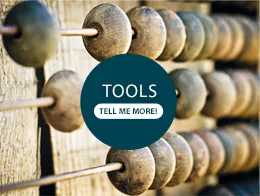Every educational institution these days talks about innovation. But MIT’s Sloan School of Management is among the very few that can actually back that claim up, particularly in the world of sustainability. That became clear to us at We See Genius when we started learning about the MIT Sloan Sustainability Initiative.

Jason Jay. Courtesy photo
Starting with just one class in 2006, the Sustainability Lab — now known as the renowned “S-Lab” — grew to become the initiative, spanning both Sloan and the entire Massachusetts Institute of Technology. Jason Jay, director of the MIT Sloan Sustainability initiative, knows just what kind of challenges a university-wide program deals with when it aims to tackle the world’s greatest problems. “How do we provide access to energy to the one billion people in the world who don’t have it, and the six billion people who have it, while reining in climate change and other environmental impacts? How do we provide access to food and clean water while reining in the impacts of the way we do agriculture?” he asks. The Sustainability Initiative was developed to tackle those problems, with the goal of finding workable, sustainable, solutions. “Those are big innovation challenges, and we have to figure out innovations in management practices, in the supply chain, and in new products and technologies,” Jay says.
The MIT Sloan Sustainability Initiative leverages the knowledge from the entire university: Students in the MBA program are working on energy policy projects with nuclear physicists. Sloan students working on water solutions are working with Ph.D.s in materials science and bio-oceanography. And it’s not just scientific expertise — urban planners are working with MBAs on social impact projects, and finance specialists are developing best practices for impact investing.
To find out more about MIT’s Sustainability Initiative, We See Genius sat down with Jason Jay. See the full transcript, edited for readability, below.
Open All Close AllMIT’s sustainability initiative traces itself back to a class that was launched in 2006, and that is still taught today, called Laboratory for Sustainable Business, aka S-Lab. It’s an action learning class where students form teams to work on real problems faced by real companies trying to advance sustainability strategies.
Over time, this effort has grown to new course offerings, such as Leading Sustainable Systems, taught by, Peter Senge, Wanda Orlikowski, and Sinead O’Flanagan, the MIT Sloan Sustainability Certificate, and an active effort to infuse sustainability topics into the core of how we teach management at MIT.
The Sloan School of Management has come to see the Sustainability Initiative as a key strategic initiative for the school. We get a lot of support from Dean (David) Schmittlein’s office, particularly because they see it as a way for us to embody our mission to develop principled innovative leaders who improve the world, and to develop ideas that advance management practice.
Concentric Circles
As director of the Sustainability Initiative, I see our portfolio of opportunities for students as concentric circles where people can dip their toe as deeply into the waters of sustainability as they want. If they want to just come to the weekly lunch series to learn about a particular career direction in sustainability, they can do that. Or they can go a little deeper and take an elective in, say, energy policy or system dynamics, or the S-Lab.
The sustainability certificate is for people to go much deeper and do six courses in sustainability and join a cohort of people who are knowledgeable, committed to impact, and self-identifying as sustainability certificate graduates. But this group is not isolated from the rest of the Sloan community.
We are working with admissions to bring sustainability-focused students to MIT, working closely with the career development office to make sure that they were getting really great jobs. Among our immediate peers — the top-tier U.S. business schools — we have been ranked the best in sustainability by both the NetImpact Business as UNusual rankings and the Corporate Knights Better World MBA rankings.
About 80% of our master’s-level students graduating from Sloan take at least one elective in sustainability, between 30% and 35% take three or more electives in sustainability, and last year 41 people from all of MIT completed the sustainability certificate program.
Here’s how we think about it: Tackling the big social and environmental challenges of our time requires significant innovation. For example, how do we provide access to energy to the one billion people in the world who don’t have it, and the six billion people who have it, while reining in climate change and other environmental impacts? How do we provide access to food and clean water while reining in the impacts of the way we do agriculture? Those are big innovation challenges, and we have to figure out innovations in management practices, in the supply chain, and in new products and technologies. We have to figure out new business models and new market infrastructures, policies or institutions that enable all those things to thrive.
It’s an innovation challenge. We need to be educating people who are innovators — who are generating and advancing those solutions. We can educate the innovators by allowing people to go deep into the topic. That’s why we have a sustainability certificate. It’s also why people will take classes at the MIT engineering school or will study disciplines like green supply chain management or energy technologies.
Infusing Sustainability into the Curriculum
And at the same time, we need to be educating the customers or adopters of those innovations and solutions. To do that, we have to have everybody who is going to be in a position of management to be somewhat knowledgeable about sustainability. We realize that 80% of MIT Sloan students might take one elective but we need to have everyone who graduates knowing something about sustainability and can be adopters or proponents of these innovations.
Two examples of how we infuse sustainability into the curriculum include a case on Nike’s sustainability strategy in our Organizational Processes core class, and a case on Vermont Electric Power in our Data, Models, and Decisions core class. We’re developing a new case on solar energy that we hope will be part of the first-year strategy elective class.
There’s definitely a powerhouse community of thought leaders around sustainability here at MIT Sloan. John Sterman is one of the founders of the system dynamics field and does extensive research on climate change and doing climate modeling. In fact, his research made it to the front page of the New York Times because of its influence on the Paris climate accords. He’s one of the faculty teaching the S-Lab class and he also teaches the System Dynamics class, which is part of the sustainability certificate.
Peter Senge teaches our leadership and sustainability class. He is a best-selling management author and one of the highest-regarded management thinkers of the last two generations on organizational learning and learning organizations. He’s written extensively on sustainability and is involved with the most advanced networks of companies and NGOs that are driving sustainability strategy.
Tom Kochan teaches a class on managing business for people and profit and is co-director of the MIT Sloan Institute for Work and Employment Research. You’ll always hear him on NPR any time labor issues come up. That’s because, on any labor standards issues, from labor law or union management issues to innovations around creating good jobs, he’s the guy.
Zeynep Ton, who teaches in the operations management group, wrote the book The Good Job Strategy. Her research is about advancing operational innovation that allows companies to be more profitable while paying workers more and creating better jobs. She teaches our Service Operations class, which is all built around the concept of doing well by the people who work for you.
Chris Knittel teaches Energy Policy and is one of the leading scholars on climate policy in both the transportation and the electricity domains. Roberto Rigobon, one of the most esteemed macro economists in the world, teaches courses on the macroeconomics of sustainable development.
The list of faculty I gave are all just Sloan faculty, and then there’s a whole array of other faculty in engineering, political science, and urban studies and planning that our students learn from.
Sustainability efforts often come down to a few key disciplines. The first is operations. So much of sustainability in companies comes down to optimizing your factories, optimizing your supply chains, your logistics, figuring out ways to take waste out of all those systems — so if you’re a crack sustainability person, that often means being a crack operations person. MIT Sloan is No. 1 in operations, period.
The second discipline is innovation and entrepreneurship: knowing how to bring new solutions to market. That is also a key strength of MIT Sloan, a reason people come to the school. We have classes on developing Energy Ventures, Waste Ventures, Development Ventures, and my class on Sustainability Oriented Innovation and Entrepreneurship.
The third discipline is finance — we have to mobilize a lot of capital if we want to solve the big challenges. MIT has a superb finance faculty, and we are collaborating with them more and more every year to deliver content on impact investing and related domains.
Furthermore, anyone who wants to do work in sustainable real estate, MIT is tops in urban planning and boasts a Center for Real Estate. MIT is the place for anyone who wants to do work in energy, water, innovation; people who want to do impact investing, particularly impact investing where investors are involved in the innovation process — for example, in early-stage companies that can really scale. Given the capacities of MIT, there’s no better place to be.
As much as the energy for sustainability comes from the faculty, even more is driven by the students. We have an incredibly vibrant Net Impact chapter here with more than 150 students, and won Net Impact’s chapter of the year, beating out the Kellogg School. Our club is a force! They run a fellowship program in the summers for students doing internships in social impact, the Sloan Social Impact Fellowship (SSIF). The program, along with a school contribution, is subsidized by students who give a day of their salary to help fund social impact fellowships for their peers. We’ve also got a Board Fellowship program where MBA students can work on boards of local nonprofits.
Importantly, Net Impact offers professional events throughout the year to help students navigate careers in social impact and sustainability; we here at the Sustainability Initiative work with the club and students on this effort very closely.
I do want to mention some other clubs that can also be good entry points for people who are thinking about sustainability and impact. For example, there’s club called Sloan Entrepreneurs for International Development that focuses on bottom-of-the-pyramid and international development topics. There are topical clubs like an Energy Club, a Water Club, and Food and Ag Club, all of which are university-wide clubs. The Sloan students have the chance to engage with their colleagues in engineering and urban studies and planning, and other master’s programs and other graduate student programs across MIT. We often see Sloan students as leaders of those clubs because they are natural organizers, but the constituencies and members of those clubs come from across MIT. These connections really allow Sloan students to tap into the magic that happens at MIT. One of the challenges I see our peer schools facing is that their business schools are isolated from the rest of the campus and their sustainability students are a clique within the business school. Instead, we are much more integrated. We’re really proud that our clubs and classes and the Sustainability Initiative itself bring people together from across MIT.
Finally, there’s the MIT Impact Investing Initiative (MI3) that was just launched and that is doing fantastic work. In fact, representatives of MI3 were actually the winners of a national impact competition in May 2016 that was hosted at Wharton.
This impact investing club dovetails with new research and a new course that we are planning at Sloan to be launched this coming year on impact investing, finance, and sustainability. The class doesn’t have an official title, but stay tuned. It will be a hard-core finance class taught by finance faculty with a finance prerequisite so that people really learn the hard skills of impact investing.
That’s our emphasis here at MIT: You get to work on sustainability to the extent that you can bring the core skills of operations, finance, entrepreneurial business development, and strategy to the discipline.
When we think about careers and sustainability, we use a framework developed by my friend at Duke University, Katie Kross. She has developed a 2×2 matrix with traditional and sustainability-oriented roles and traditional and sustainability-oriented companies/organizations.

The matrix shows four cells of slightly different careers and experiences. We are very happy to send our graduates to all four of those cells. But it’s really important to understand how those experiences are different. In the sustainability role inside a traditional company (lower-left quadrant), we see jobs for CSR staff, or environmental health and safety, or a corporate affairs function where the role is to look out for the reputation and interests of the corporation as a whole and manage its risks from a regulatory reputational and operational standpoint. We see professionals do great work in these staff roles — an example might be galvanizing energy-efficiency programs that cut across a firm’s facilities and operations. That said, those staff people in sustainability are only going to be effective to the extent they have a receptive audience among core line business people.
We also want to put people into traditional roles in traditional companies that impact sustainability. Greg Zielinski, who graduated from Sloan in 2012, went to work for Amazon and he is now the manager of one of their Washington state distribution centers. From that role he’s able to work on job quality and social sustainability issues in a way that no HR-function or sustainability-function person can. He’s got the authority to make his facility a pilot for efforts in sustainability in a powerful way. His work might dovetail with people who are in a sustainability-related staff function.
Training for Sustainability Impact
Even if you want to be a chief sustainability officer (or something similar), you have to speak the language of business; you have to have the operational and finance skills or the marketing skills to be able to speak the language of the people you are trying to engage with inside the company, and be able to credibly make the business case for the efforts that you are promoting.
People who are interested in sustainability have to have a really interesting mix of skills: they have to understand sustainability, they have to be able to talk to NGOs, and they have to be able to sense the emerging issues that companies are going to have to face in the future. Then they have to be able to translate what’s needed and engage people across different functions of the business. This field requires a real multilingual sensibility.
Through the Sustainability Initiative, we think that we develop people with that sensibility. We know that more than half our sustainability certificate students go into traditional roles in traditional companies — consulting firms, or strategy or operational roles in companies. We’ve noticed that they bring a sustainability lens to their work; they see ways to create value, whether it’s through greater labor productivity or greater energy efficiency or new business opportunities in clean technology or differentiated products.
Business Roles in Sustainability-Oriented Companies
Sloan has a distinctive advantage in the upper-right quadrant, traditional business roles in sustainability-oriented companies. For example, we’re seeing a lot of new enterprises being built to deploy clean energy technologies or energy efficiency technologies. Companies like EnerNOC or Opower have a mission to advance sustainability, and have jobs for people with an operations sensibility or a finance sensibility or business development. I really like that quadrant because that’s where you see fast-growing enterprises, offering people a way to making use of their MBA skills, and to be part of the innovation process that we honor here so much at MIT. But again, we’re very happy to see people go into all four quadrants of the sustainability matrix.
The two companies I mentioned above, EnerNOC and Opower, have a number of Sloan alum. Tom Atkinson (Sloan ’94) is on the EnerNOC executive team, and Jeremy Kirsch (Sloan ’04) is the COO of Opower, which was just sold to Oracle.
Robin Chase (Sloan ’86) started Zipcar. She’s a real innovator. Zipcar has been very successful; it was sold to Avis for almost $500 million. Now we’ve seen further evolutions in car-sharing with Uber and Lyft. A well-shared Zipcar replaces 15-20 cars on the road, so there’s a really interesting set of environmental benefits there in a business that’s been very successful. That’s the kind of innovation that we like to celebrate here at MIT Sloan.
A number of really exciting social enterprises have come out of Sloan. There’s a waste startup called Sanergy, which won the MIT business plan competition in 2011 and is now quite visible in the social enterprise and investing circuit. They’re working in Nairobi, Kenya and other megacities in the developing world with a great sanitation solution. They make a pay-per-use toilet that can capture the waste and turn it into energy and fertilizer. This way they solve a public sanitation problem, an energy problem, and an agricultural activity problem in one business model.
Another one is a company called Wefunder which is a crowdfunding company. Founder Mike Norman (Sloan ’10) started out in urban studies and decided to do a joint degree with Sloan. He was really passionate about urban economic development and getting capital and entrepreneurship opportunities for people who might otherwise not have it. He explored a couple of different business ideas around urban entrepreneurship. What he realized was that if we could do crowdfunding of startups, it would open up a whole new pool of capital for nontraditional businesses that currently don’t get investments — businesses that venture capital funds wouldn’t have on their radar.
At that time, the regulatory infrastructure prevented crowdfunding of startups; to take an equity position, you had to be an SEC-accredited investor, requiring a net worth of $1 million. So Mike built a political coalition, working with a bipartisan group from Congress, and in less than a year got a bill passed called the JOBS Act — JOBS is an acronym for Jumpstart Our Business Startups — which Obama signed into law and which enabled crowdfunding of startups. So he founded Wefunder, a brokerage for crowdfunding. That created a whole new market infrastructure for funding of innovation and getting capital into peoples’ hands who otherwise wouldn’t have access to the capital markets for startups and innovation. He created a new policy, a new market infrastructure, a new context for innovation. If you look at the kind of investments on Wefunder, you’ll find businesses in cleantech, software to help utilities and enterprises cut their energy use, entrepreneurs who are coming from urban communities who are developing products for those urban communities. That’s the kind of really game-changing innovation that we’re particularly proud of.
And then we’ve got people who are building out really important capabilities in institutions. For example, Wellington Asset Management, one of the top asset managers in the world, has Christina Zimmerman, an environmental, social, and governance strategist (ESG) who is an executive MBA student at Sloan, and an ESG analyst working for her who is an alum of our sustainability certificate program, Drew Morales ’15. They are really building out the capability at Wellington to get superior returns on their investments by being smarter about sustainability.
One of the things I’ve noticed about our students is a humble brilliance. People are really smart and are really capable, but they don’t really wear it on their sleeves. They’re extremely collaborative and supportive of each other. Anyone who has an idea for something they want to advance, everyone around them mobilizes to help them to do it. It’s a profoundly loving community, which is something that you don’t necessarily expect from MIT.



